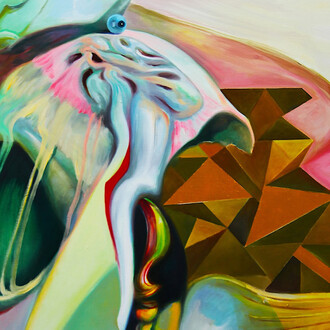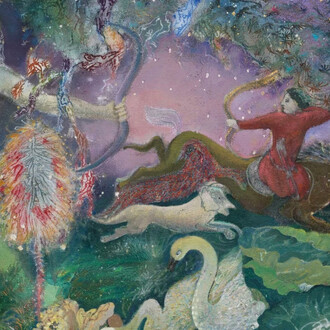There has not been a major Mexican and Guatemalan Dance mask exhibition in New York City let alone in this country since the 1980s.
Robert Bishop, the ex-director of the American Folk Art Museum had asked Cavin-Morris Gallery to curate one for the museum, but he unfortunately passed on before it could be implemented.
It left a very unfortunate gap in the understanding of this fascinating American art form. There are still Yaqui ceremonial dances, for instance, in Arizona during Easter week. It is a vital changing, living form.
It has taken almost forty years for Cavin-Morris to gather this collection of carvings together and reintroduce these masked traditions to the public in an authentic and qualitatively high presentation.
The oldest wooden Mexican mask on record is in the American Museum of Natural History and was carved by an Olmec artisan (1200 – 400 BCE). There were undoubtably many wooden masks, but wood perishes easily in the humid lowlands of Central America.
Surviving masks dating from the early 20th century are of venerable age. We include several Pre-Colombian sculptures of heads and faces for reference including a skull mask from Colima culture (300 – 900 CE) and a stone Chontal mask (350 – 100 BCE).
Mexican and Guatemalan masks have canons of form and content, but they are open to idiosyncratic styles of carvers, and like some Himalayan masks, are open to their personal styles and expressions.
The masks in this exhibition date from the beginning of the 20th century to the third quarter of the 20th century.
Stylistically, they range from variations on classic human faces, to bull-devils, to anthropomorphic jaguars. They come from several private American collections.
These masks contain the syncretic history of the Americas, often combining Native American, European and African iconographies.
Some have shamanistic references and some record colonial histories. Many of these dances, each with a rich variety of characters, are still being danced today in Mexico and Guatemala.
We view this exhibition as an important introduction to a deep abiding culture, ancient in roots and still vital in the present--a truly American art form.
















